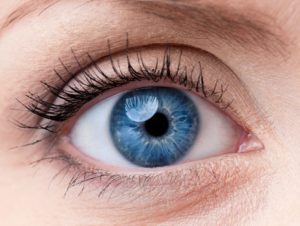Awareness, compliance and the right products can prevent on-the-job eye injury.
Accident Compensation Corporation (ACC) claims for eye injuries at work may be steadily falling but there is still no room for complacency.
ACC statistics reveal that the number of workplace eye injuries dropped from 12,586 in 2012 to 12,300 in 2014.
This is an encouraging development, but the associated healthcare costs and hours of lost productivity associated with job-related eye injuries are still far too high.
Unfortunately, the sad fact is that many of these injuries could have been prevented had the workers been wearing the proper eye protection.
It is every employer’s responsibility to assess eye safety hazards in the workplace and take measures to ensure employee safety by complying with government regulations for eyewear and emergency eyewash stations in the event that an accident does occur.
Employers should take heed of AS/NZS 1336:1997 – recommended practices for occupational eye protection, which states: “An eye safety programme should be introduced where persons at work are exposed to a recognised risk of injury to the eyes.”
Safety managers must understand the unique safety requirements for their workplace environment, which generally fall into three categories:
- mechanical – dust, flying particles, sparks, blunt objects, metal fragments etc
- chemical – splashes, gases and vapours and steam
- optical – ultra violet, infrared, visible light and glare.
Once any hazards are identified, it is critical to determine which products best suit the needs of employees, which includes providing protective eyewear to ensure the highest level of protection against injury, and installing emergency eyewash stations.
Correct protection
First, a plant supervisor or safety specialist should conduct an analysis and hazard assessment of the work areas, job applications, access routes and the equipment itself.
There should also be an examination of any past eye accident/injury reports. Vision testing should also be a part of a company’s safety programme, as uncorrected vision is a contributing factor to injuries.
The eye protection chosen for specific work environments depends upon the nature and degree of the potential hazard, the circumstances of exposure and other personal and workplace factors. The selected eye protectors must be suitable to minimise the identified hazards and comply with the relevant requirements of AS/NZS1337.1 and AS/NZS1338 Parts 1 to 3.
Eye and face protection generally consists of safety eyewear, goggles or face shields, with safety spectacles the most common form of protection. Safety eyewear is designed with side protection and can resist an impact up to 150 feet per second.
There are two basic types of goggles which form a protective seal around both eyes – impact and chemical. Chemical goggles have hooded or indirect ventilation paths protecting the worker from chemical splashes.
Impact goggles have direct ventilation holes and protect against direct impact or large particles. In addition, there are face shields which are used in welding, grinding or sanding applications. However, face shields are considered secondary protection and must be worn in conjunction with protective eyewear or goggles.
Safety eyewear should provide the appropriate amount of coverage and should fit each individual worker properly and comfortably. It’s also important for protective eyewear to provide some level of style to increase worker acceptance.
Eyewash stations
When an accident does occur, the difference between a very serious injury and one that can be mitigated often comes down to a matter of seconds.
As a rule, laboratories or companies must have eyewash stations if work environments require paint, solvents, battery charging stations, hazardous chemical storage, tool parts washers or chemical pumping/mixing areas.
If employees are using chemical-resistant gloves, cartridge or air-supplied respirators, chemical-resistant goggles or flammable storage containers, eyewash protection is most likely required as well.
Eyewash stations should be:
- located in areas where caustic or hazardous substances are present
- placed in accessible locations that require no more than 10 seconds to reach
- located on the same level as the hazard
- free of obstructions that might inhibit immediate access
- in a visible area identified with a sign
- positioned with the flushing fluid nozzles no less than 33 inches and no greater than 45 inches from the user.
Portable, sealed-fluid cartridge devices represent a major step forward in workplace eye injury treatment.
Leading units feature factory-sealed cartridges containing a purified, buffered saline solution that remains free of bacteria or contamination for 24 months.
This two-year shelf life is determined by the date of manufacture, and is more than four times longer than any other primary, portable eyewash station.
The units can only be refilled with a sealed-fluid cartridge, thus avoiding the contaminants found in tap water.
Ultimately, however, employers must make informed safety decisions, take the time to assess eye safety hazards in their facilities, determine the necessary protective equipment, and provide employees with the products and training needed to ensure a safe workplace.



